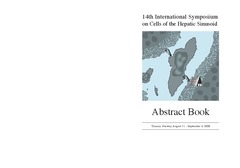Evaluation of the medical student research programme in Norwegian medical schools : a survey of students and supervisors
| dc.contributor.author | Hansen, John-Bjarne | |
| dc.contributor.author | Hunskaar, Steinar | |
| dc.contributor.author | Breivik, Jarle | |
| dc.contributor.author | Figenschau, Kristian | en |
| dc.contributor.author | Siebke, Maje | |
| dc.contributor.author | Tømmerås, Karin | |
| dc.date.accessioned | 2009-10-19T12:14:31Z | |
| dc.date.available | 2009-10-19T12:14:31Z | |
| dc.date.issued | 2009-07-14 | |
| dc.description.abstract | Background: The Medical Student Research Programme is a national education and grant scheme for medical students who wish to carry out research in parallel with their studies. The purpose of the programme is to increase recruitment of people with a standard medical degree to medical research. The Research Programme was established in 2002 and underwent a thorough evaluation during the spring of 2007. The evaluation should investigate if the programme had fulfilled its objectives of increased recruitment to medical research, in addition to the students' and supervisors' satisfaction of the programme, and unwanted differences between the universities. <br> Methods: Data was collected from students, supervisors and administrative staff via web-based questionnaires. Information about admission, implementation, results achieved and satisfaction was analysed and compared between the four Norwegian medical schools. In addition, the position of the scheme in relation to the national Quality Reform of Higher Education was analysed. <br> Results: At the end of 2006, the Medical Student Research Programme had recruited 265 medical students to research. These consisted of 214 active students, 35 who had completed their studies and only 17 who had dropped out. Both students and supervisors were generally very satisfied with the scheme, including the curriculum, the results achieved and the administrative service. The majority of students wanted to continue their research towards a PhD and, of those who had completed the Medical Student Research Programme, practically all had published one or several scientific papers. The survey showed only small differences between the four medical schools, despite their choice of somewhat different solutions in terms of administration and organisation. The Medical Student Research Programme satisfies the majority of the demands of the Quality Reform, however as an integrated research programme aimed at a PhD it presupposes access to PhD courses before the completion of medical studies, as well as the ability to include undergraduate scientific work in a PhD thesis. <br> Conclusion: The Medical Student Research Programme has led to an increase in the recruitment of graduated physicians to medical research in Norway. It will only be possible to evaluate whether this in turn will result in a larger number of PhDs in 3–5 years; this will also depend on the access to grants and fellowships. | en |
| dc.format.extent | 188826 bytes | |
| dc.format.mimetype | application/pdf | |
| dc.identifier.citation | BMC Medical Education 2009, 9:43 | en |
| dc.identifier.uri | https://hdl.handle.net/10037/2183 | |
| dc.identifier.urn | URN:NBN:no-uit_munin_1935 | |
| dc.language.iso | eng | en |
| dc.publisher | BioMed Central | en |
| dc.rights.accessRights | openAccess | |
| dc.subject | VDP::Medical disciplines: 700::Health sciences: 800::Medical/dental ethics, behavioural sciences, history: 805 | en |
| dc.subject | VDP::Medical disciplines: 700::Health sciences: 800::Health service and health administration research: 806 | |
| dc.title | Evaluation of the medical student research programme in Norwegian medical schools : a survey of students and supervisors | en |
| dc.type | Journal article | en |
| dc.type | Tidsskriftartikkel | en |
| dc.type | Peer reviewed | en |


 English
English norsk
norsk


